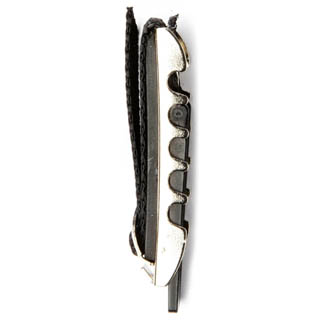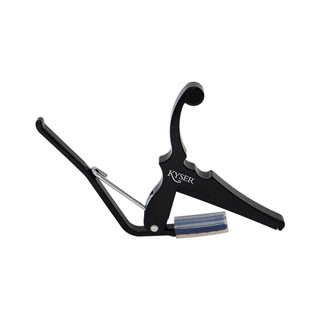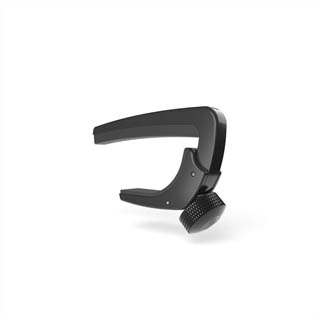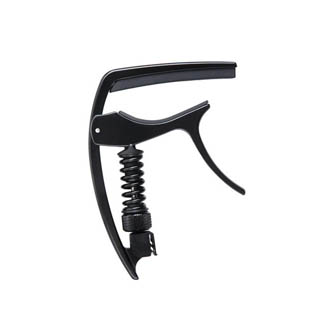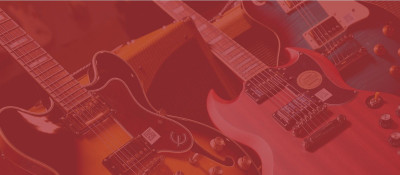How to Choose a Capo: What's The Best Capo for Acoustic, Electric & Classical Guitar
Posted by Jason Klagstad
What is a Capo?
A capo is an easily movable bar that is used on guitars to clamp down on some or all strings. Capos are positioned on a particular fret to raise the pitch of the clamped strings. In most instances, players use capos to play the same chord shapes they play without a capo, but at different keys or pitches. The challenges of choosing the right capo come from selecting one that's easy to change position, applies even pressure across all strings in order to eliminate fret buzz, and being small enough to avoid getting in the way of a player's hands.
What is a Capo Used For?
Capos are used to allow easier chord-playing in any pitch or key. Capos can ultimately be used on many stringed instruments: guitars, mandolins, mandolas, banjos, ukuleles, bouzoukis—virtually any instrument that has strings over a fingerboard.
Some styles such as flamenco, Irish traditional music and British and American folk music make extensive use of the capo, but it is rarely used in jazz and classical music. Many rock musicians like Richard Thompson, Ry Cooder, Steve Earle, George Harrison, Bob Dylan, Johnny Marr and others also use the capo to help enhance their music. In many cases, capos have been extended past their traditional purpose of changing the key, and have been used to break new ground by utilizing the tool in new ways.
Can You Use a Capo on an Electric Guitar?
Sure! Lots of people use capos on electrics, but you must take extra care not to press down too hard that would cause the strings to go sharp (above the pitch).
How to Use a Capo
- Clamp the capo as close to the desired fret as possible with just enough pressure to eliminate buzzing upon playing the strings.
- Make sure the capo is tight enough that all open strings ring clearly but not too tight so that the strings are pulled sharp.
- Choose a capo that mirrors the curvature and width of the fretboard. Some guitars have very curved fretboards and guitars such as 12-strings have very wide fretboards. Select one that matches your guitar neck.
- Capos can get in the way of your fretting hand - check to be sure whatever capo you choose doesn't interfere with your technique.
- Watch how you attach the capo to the neck on both sides - fretboard and back. The neck can be easily dented and/or scratched.
Types of Guitar Capos
Elastic Band & Lever Capos
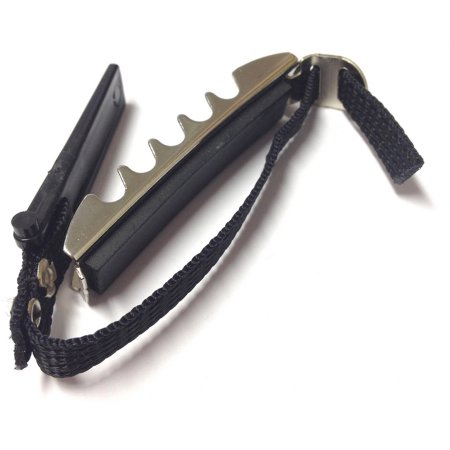
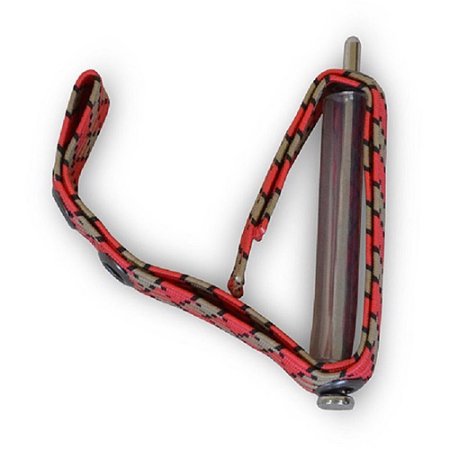
Dunlop makes a line of very inexpensive lever & elastic band capos.
Both are very inexpensive, lightweight pieces of hardware that are considered good enough if you're starting out on guitar. The lever style uses a notched mechanism for tightening the capo on to the guitar strings.
The elastic band capos draw the band across the back of the guitar neck and attach to a grommet hole on the far side. Both capos are cheap enough that you can afford to buy a few in case you lose one.
PROS:
- Very cheap to buy - usually just a few dollars
- Small size won't impede your fretting hand
CONS:
- Many are flimsy
- Tightening mechanism has a tendency to pull strings out of tune
BOTTOM LINE:
- Expect to spend between: $5-$10
- Entry level only capos. Not recommended for intermediate to pro.
Spring Loaded/Trigger Capos
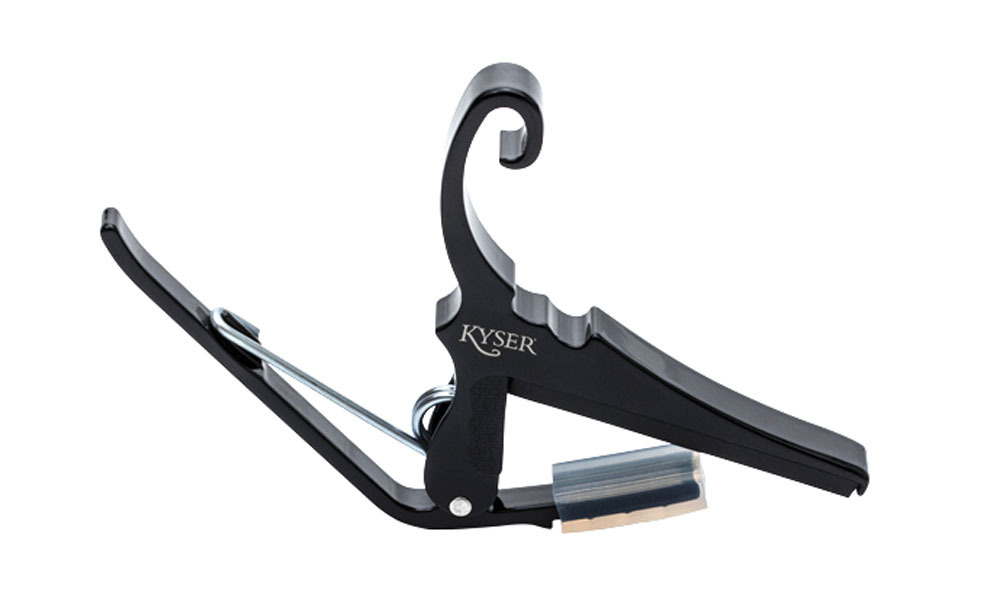
Kyser makes a wide range of affordable spring loaded capos for most instruments
The spring loaded capo utilizes a spring-controlled handle that enables you to add or remove the capo quickly.
PROS:
- Can add or remove the capo quickly - often mid-song if needed
- Capo can be clamped or unclamped with one hand
- Not expensive
CONS:
- The amount of pressure applied to strings is not adjustable
- More prone to string bending because of that
- Bulky
BOTTOM LINE:
- Expect to spend between: $15-$25
- If you change keys a lot and perform onstage, this may be the one for you.
C-Clamp Capos
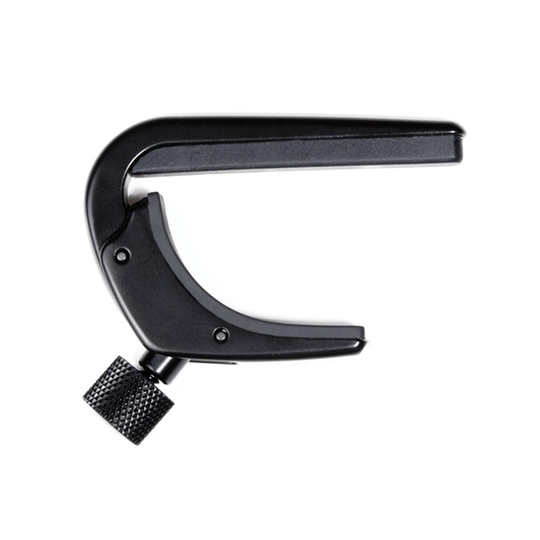
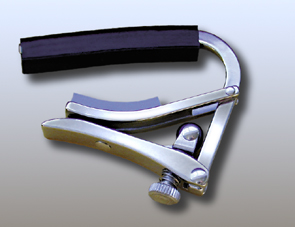
D'Addario makes a very popular line of C-Clamp capos.
A c-clamp capo requires manually turning a screw which causes the capo to apply pressure to the guitar strings.
PROS:
- The most sturdy and reliable type of capo
- Less tendency to put the guitar out of tune
- More compact - less likely to interfere with guitarist technique
CONS:
- More finicky to clamp/unclamp than the spring-loaded capos
- Costs a couple bucks more than the cheapest capos
BOTTOM LINE:
- Expect to spend between: $14-$20
- Very small form factor but difficult if you want to change quickly
Shubb Capos

Shubb, the capo's namesake, makes the most recognized versions of this capo.
PROS:
- Claims to have the least impact possible on the tuning of the instrument
- The capo can be removed very quickly by simply releasing the lever
CONS:
- Has the disadvantage of requiring two hands to properly apply or move
- Adjustment is more complicated than some other capos
BOTTOM LINE:
- Expect to spend around $30
- For the serious professional
Tri-Action Capos
D'Addario has combined the spring-type capo and fine tune screw adjustment of the Shubb to create a quick-change, extremely adjustable capo.
PROS:
- Very easy to adjust to the guitar's neck curvature
- As with the Shubb and Kyser Spring types, the capo can be removed very quickly by simply releasing the lever
- Requires only one hand to change frets. Very easy to change once initial adjustment has been made
CONS:
- Adjustment is more complicated than some other capos
BOTTOM LINE:
- Expect to spend around $18 - $25
- For intermediate to pro players
What You Need To Know About Capos
Our recommendation is that, given the moderate price yet very high quality of the midrange capos, a spring-loaded or c-clamp type capo offers the best durable long-term, affordable and precision use. Cream City Music staff recommends trying the D'Addario NS Tri-Action Capo.
Still on the fence? Click here to browse our full slection of guitar capos.
Have more questions about guitar capos? Call us at 1-800-800-0087 to speak with one of our gear experts.

